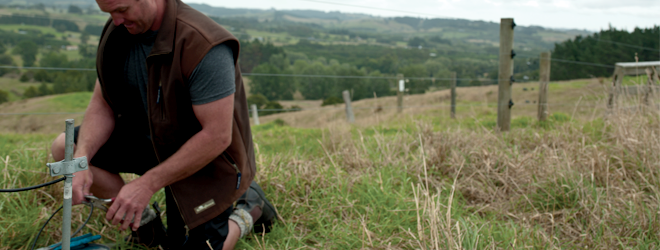
Underperforming energizers? Check your earth system
26 March 2018
10 / 10 People found this article helpful
Electric fence energisers are operating below their voltage potential on many New Zealand farms. The problem is easily solved with a good earth system!
An energiser’s performance is only as good as the earth system that supports it. When older energisers are upgraded to newer, larger units, the earth system is often overlooked. For an energiser to shock effectively it requires a properly set-up earth system to complement the energiser output and complete the circuit. Investing thousands on an energiser for reliable stock containment is wasted money if the earth system isn’t suitable.
A poorly -established earth system can result in the energiser providing a much weaker shock on the fence line than required and can lead to stock breakouts. A less obvious repercussion of poor energiser earthing is stray voltage. This occurs when the energiser’s earth system is not sufficiently gathering the electrons returning to the energiser to complete the circuit and send the shock. These electrons must earth and will seek out other metal objects to do so, resulting in shocks off metal sheds, feed silos, cow shed bails and gates or whatever other metal is nearby.
To test your earth system’s voltage, a digital voltmeter should be used on the last earth rod furthest from the energiser, when the fence line is shorted out. The voltmeter reading should be no more than 300 volts (V) or 0.3 kilovolts (kV). Touching the last earth rod to see if you get a shock is a simple but effective way of determining if the earth system is not adequately supporting the energiser.

The trusted rule of thumb for an energiser earth system is the three:two:one ratio. That is, earth rods three metres (m) apart, using two metre long galvanised earth rods (to avoid rusting) and one continuous cable from the earth terminal to the last earth rod. Remember one earth rod is needed for every three to four output Joules (J) with a minimum of three rods for any mains unit. The location of an earth system is important - they can be up to 1000m away from the energiser but must be a minimum of 10m away from other earth systems, eg house mains, to avoid lightning strike jumping.
An earthing system should be installed in spaces which are easy to find for checking or upgrading but are out of the way of stock and traffic movement. Damp or wet areas are preferred and sites against the south-facing sides of sheds or around effluent ponds are recommended. Y-posts, waratahs or old pieces of steel often do not penetrate deeply enough into the soil to find moisture, are prone to rust which prevents good transfer of elections, and can struggle to get a clean connection between the underground cable and the earth rod.
The Stafix Earth Kit comprising three earth rods and clamps are made from solid galvanised steel that ensures a clean, rust-free connection between the energiser and earth system, and optimises the performance of your electric fence.
See the team at your local Fonterra Farm Source store today for more information on Stafix Earthing Kits.
Article supplied by Tru-Test Ltd



